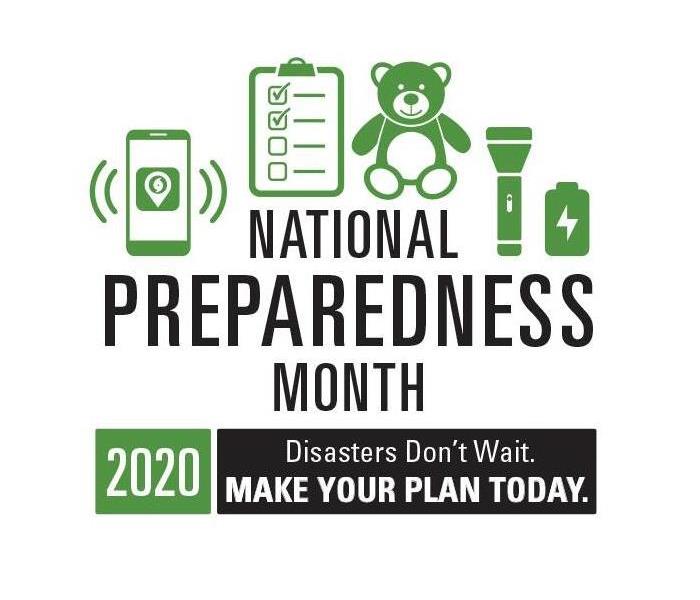September: National Preparedness Month – Week #2
9/6/2020 (Permalink)
National Preparedness Month – September
Week #2 – September 6th-12th, Goal: Build A Kit
The goal of an emergency kit is to help your family survive without assistance for at least 3 days. Last week, we took note of any specific supplies you will need to include for each member of your family. This week, we are adding all of the basic necessities that your family will need!
Basic Kit Items:
- Water (for each person)
- Food (for each person) Hand crank can opener
- Local maps
- Cell phone chargers & a backup, portable battery
- First aid kit
- Whistle
- Dust masks & cloth masks
- Battery operated radio and/or weather radio
- Flashlights
- Extra batteries
- Wipes
- Trash bags
- Wrench & pliers (for cutting off emergency lines)
- Plastic sheeting & duct tape
Additional items to consider including:
- Cash
- Sleeping bag or blanket for each person
- Complete change of clothing for each person (including shoes)
- Fire extinguisher
- Activities for any children
- Soap & hand sanitizer
- Matches (make sure to store in a waterproof container!)
- Personal hygiene products
- Disposable paper products
- Prescription & over the counter medication
- Contact lens solution (if applicable)
- Copies of important family documents, in waterproof container or saved electronically
- If applicable: formula, bottles, diapers, wipes & diaper rash cream
- If applicable: pet food & water
Maintaining Your Home Kit:
Now that your kit is stocked and ready to go, you will need to update it regularly. A good idea is to update the kit each time you take a look at your emergency plan you created last week. This ensures it is kept up to date, and all items are ready to be used at any time. This also gives you the chance to update any specific items. For example: if an infant no longer needs bottles, remove those items from the kit to save room. You may then need to add in some jars of baby food.
Other Kits:
Now that you are on a roll, consider making smaller kits for work, and to keep in your vehicle. These kits should be much smaller and are a lot easier to create.
Your Work Kit should prepare you to stay at work for at least 24 hours. Also include a comfortable pair of walking shoes in this kit, as you may not be wearing comfortable shoes at work when an emergency takes place.
Your Car Kit should always be in all cars you may have. This kit should include jumper cables, flares or reflective triangles, an ice scraper, extra cell phone charger (with car charger), blanket, map and cat litter or sand (to help you gain traction if stuck).
Check back on September 13th for the next set of preparedness tasks for your family!






 24/7 Emergency Service
24/7 Emergency Service
